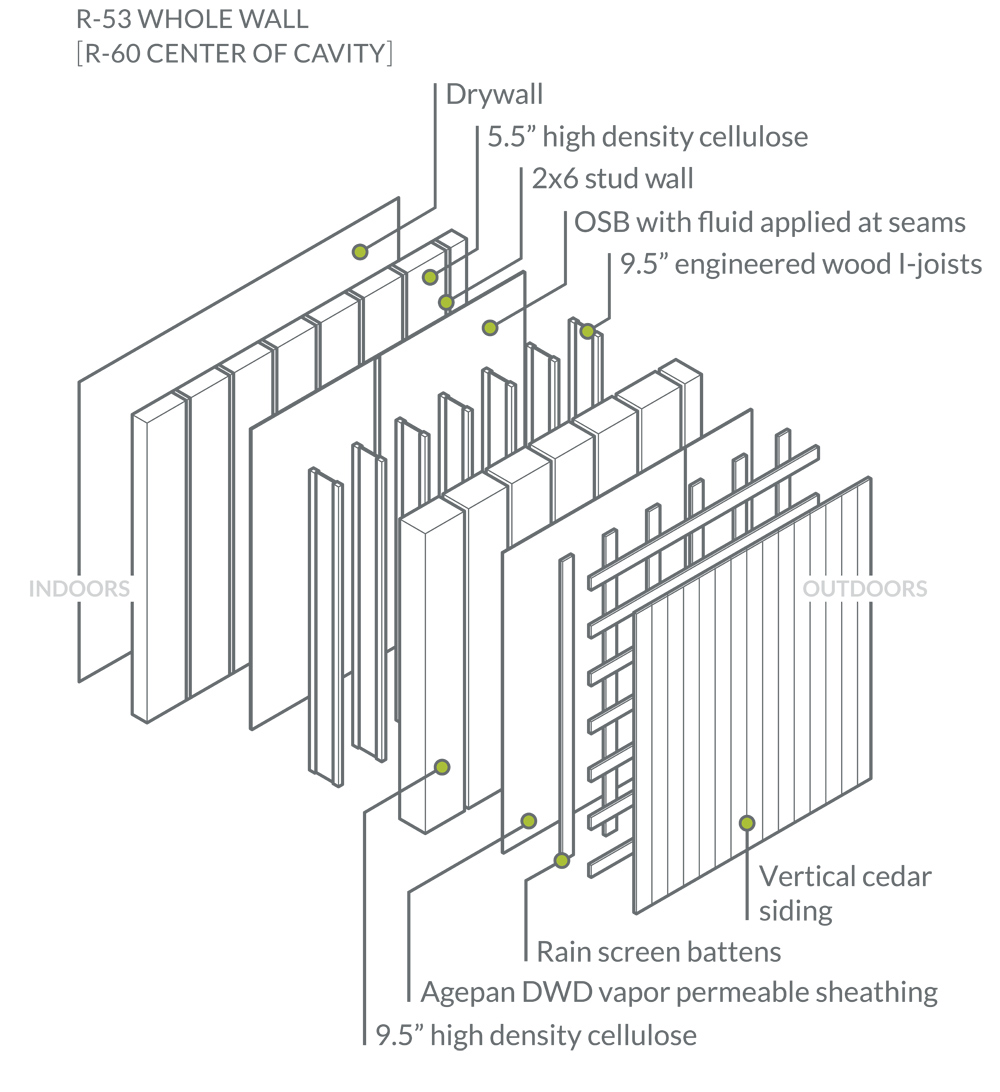
Wall Assembly
The integrated design process between Scott | Edwards Architecture and Hammer & Hand produced a design that physically expresses the home’s performance attributes. The design of Pumpkin Ridge Passive House displays thick walls, filled with several tons of high density cellulose insulation (and sequestered carbon).
 The air barrier for Pumpkin Ridge Passive House is a layer of OSB with fluid applied at seams. While the OSB is vapor permeable, and gets more so when wet, it does retard vapor transfer (read more about this below).
The air barrier for Pumpkin Ridge Passive House is a layer of OSB with fluid applied at seams. While the OSB is vapor permeable, and gets more so when wet, it does retard vapor transfer (read more about this below).

View this video to learn more about our air barrier strategy at Pumpkin Ridge Passive House:
And here’s more air barrier info:
The wall’s R-60 insulative value (center of cavity, including impact of sheet goods and air films) is provided by two thick layers of high density insulation, 9.5” in a Larsen truss system to the exterior and 5.5” in the interior 2×6 stud wall.

The first line of defense for bulk water management is Pumpkin Ridge Passive House’s vertical cedar siding and the ventilated rain screen cavity that facilitates drainage. The second (and final) barrier is the layer of tongue and groove Agepan (wax impregnated wood fiber) panels that are so tightly fit that wind cannot blow bulk water through.

Hear project lead Peter Bogart describe the Agepan layer installed on the Larsen truss system:
As mentioned earlier, the OSB is vapor permeable but it does retard vapor transfer. This throttles down the flow vapor from the home’s interior into the assembly. The rest of the assembly, from cellulose insulation to Agepan layer, is very vapor open, so the airflow created across the assembly’s face by the ventilated rain screen cavity promotes the drying of both the assembly and the cladding.

See an annotated photo tour of the assembly’s layers:








